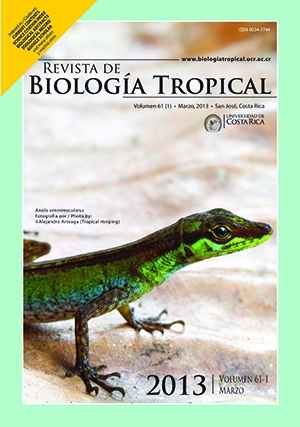Abstract
White-tailed deer is a species with a large behavioral plasticity and adaptation to different habitats, including their food habits. This study was conducted with the aim to determine the food habits of this species in the cloud (BMM) and pine-oak (BPE) forests. Deer scats and plant samples were obtained following standard methods, from Sierra Nanchititla Park in the State of Mexico, from June 1990 to May 1992. A total of 104 deer pellet-groups were collected, and histological analysis for herbivores was used and compared with stock samples of plant tissues collected from the study area. We applied the Spearman correlation and Morisita index to determine alimentary preference. The results showed that the deer consumes 79.44% of plant species from BMM and 20.56% of the BPE. There is a selectivity tendency for 12 of the 14 plant species located in the BMM, while for BPE no tendency was observed. Key species that are part of the elemental diet of the deer in these areas were: Acalypha setosa, Smilax pringlei, Psidium sartorianum and Dendropanax arborea. The consumption of plants did not differ significantly between the dry and rainy seasons in terms of biological form, however, during the dry season there is a tendency to consume trees, and by the end of the rainy season to consume herbs. The data indicate that the deer can be selective with BMM plants, while for the BPE tends to be opportunistic.Comments
Downloads
Download data is not yet available.






